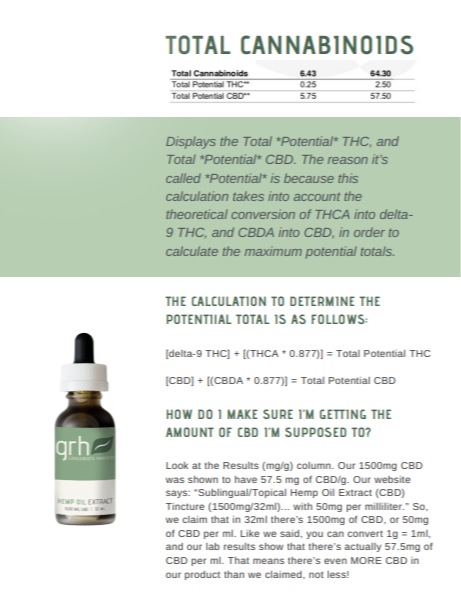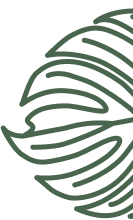If you’ve heard much about CBD recently, you’ve probably heard people talk about the importance of third-party lab reports when it comes to choosing your CBD brand.
But what exactly is a third-party lab report, and why are they so important?
Right now, the CBD market is a bit of a free-for-all. The FDA does not regulate production of CBD products, in fact, no one really does. The CBD market is federally unregulated, which means that CBD manufacturers can get away with pretty much anything when it comes to labeling/marketing their products. Some states, including Texas, are starting to regulate CBD production, but a large portion of the market is still completely unregulated.
For consumers interested in trying CBD, the lack of regulation poses a huge problem.
How can you be sure the product you’re getting has the amount of CBD it claims to?
How can you be sure it doesn’t contain more THC than advertised?
This is where third-party lab reports come in.
A third-party lab report is an unbiased look at exactly what components a CBD product consists of.
What’s Really In There?
You may have seen stories in the news recently- a few different newsgroups have had a variety of CBD products tested, and found that most of them contained much lower levels of CBD than advertised- the gummies one team tested contained absolutely no CBD whatsoever.
Some of the products from another article even contained levels of pesticides and heavy metals above acceptable limits. The results of experiments like these show how important it is for consumers to exercise caution when buying CBD.
Why Third-Party Lab Reports Matter.
Not all CBD companies are as shady as the ones above. CBD companies can, and should, take it upon themselves to have their products tested regularly- it’s one of the best signs that the company you’re dealing with is reputable, honest, and safe.
We post our most recent third-party lab report results under each of our products!
In this article, we’ll teach you how to understand a third-party lab report. We’ll go through what you can expect to see on a typical report- compounds, abbreviations, percentages, and break down what it all means.
What Compounds to Look For: The Good, The Bad, and The Ugly.
One of the most important things to know when reading a CBD lab report is what the different compounds are that may show up, and whether or not you want them in your CBD. Let’s go over some of the compounds you’re most likely to see show up:
- CBD (Cannabidiol)– This might be a no-brainer, but the main component you’re looking for on a CBD product’s lab report is… CBD. CBD is wildly popular for a whole host of potential benefits; it’s one of the best natural anti-inflammatories around, is touted for its pain relieving abilities, and some people say it helps them sleep! You want to make sure the amount of CBD in the product is what’s advertised, to make sure you aren’t paying way too much for your CBD (we’ll go over how to tell how much CBD you’re getting later on).
- *THC (Δ9-Tetrahydrocannabinol, or delta-9 THC)*- This is the main compound to be concerned about, as THC is psychoactive (causes a high). Levels of THC must be below .3% in order for the CBD to be considered federally legal (we’ll show you how to be sure in a bit).
- THCA (Tetrahydrocannabinolic acid)– Don’t be fooled by THCA! While THC is the compound to be concerned about, THCA isn’t problematic. THCA is the non-psychoactive, acidic parent of THC. Because it’s non-psychoactive, THCA levels are allowed to go over .3% without breaking the law.
- CBG (Cannabigerol)– Non psychoactive compound that’s often found in extremely low levels. Studies have shown CBG may have a number of beneficial properties, like relaxing muscles and lowering blood pressure.
- CBC (Cannabichromene)- Non-psychoactive (does not produce a high) compound that’s often found in extremely low levels. Has been shown in research to be as effective as CBD at reducing stress & anxiety.
- CBN (Cannabinol)- Non-psychoactive compound that’s often found in extremely low levels, and occurs because of THC degradation. CBN is known as a sedating cannabinoid, so while it can’t get you stoned, it may make you feel drowsy.

How To Read The Results
So, while it’s nice to know all of the cannabinoids that show up on a third-party lab report & what they do, the most important ones to look closely at are CBD and delta-9 THC. Let’s go over how to read the results of a third-party lab report using our most recent lab report for our 1500mg CBD as an example!
You’ll see our company (Grassroots Harvest) at the top in the ‘Prepared For:’ slot.
Sample Information: The next section provides information on the sample, the type of product tested, and the testing method used. You’ll see:
Sample Name- The name of the sample the CBD company gives to the third-party lab
Reported- Date on which the Certificate of Analysis is presented to the CBD company.
Batch ID- If desired, the CBD company can give a batch ID for traceability through the supply chain.
Type- Refers to what kind of sample was given. For the third-party lab we’re using in our example today, the options are- plant, concentrate, solution, or unit.
Test– This states the kind of test done- potency, terpenes, etc.
Test ID– A unique number assigned to each test run
Method– A number assigned to one of their testing methods. TM14 refers to their potency test.
Cannabinoid Profile: The next section breaks down the cannabinoid profile. We’ll go over what you might see, and what it means.
Donut Chart– The donut chart will display each cannabinoid detected, and the inside of the donut holds the total cannabinoids reported in a percentage.
Bar Chart- The bar chart is included primarily for compliance purposes, and lists levels of delta-9 THC, THCA, CBD, and CBDA.
LOQ- An abbreviation for Limit of Quantitation, this number is the lowest level that can accurately be tested for, by cannabinoid. So, on this test, in order to be able to accurately detect and measure delta-9 THC, it must be present above a .03% concentration.
Result (%)– This column displays the recorded amounts of each cannabinoid detected/tested for in a percentage format. (Make sure the level of delta-9 THC is below .3%)
Result (mg/g) This column displays the recorded amounts of each cannabinoid in a milligram per gram format. (1 gram is roughly = 1 milliliter, so this can also be read mg/ml)
Total Cannabinoids- Displays the Total *Potential* THC, and Total *Potential* CBD. The reason it’s called *Potential* is because this calculation takes into account the theoretical conversion of THCA into delta-9 THC, and CBDA into CBD, in order to calculate the maximum potential totals.
The calculation to determine the potential total is as follows:
[delta-9 THC] + [(THCA * 0.877)] = Total Potential THC
[CBD] + [(CBDA * 0.877)] = Total Potential CBD
How Do I Make Sure I’m Getting The Amount Of CBD I’m Supposed To?
Look at the Results (mg/g) column. Our 1500mg CBD was shown to have 57.5 mg of CBD/g. Our website says: “Sublingual/Topical Hemp Oil Extract (CBD) Tincture (1500mg/32ml)… with 50mg per milliliter.” So, we claim that in 32ml there’s 1500mg of CBD, or 50mg of CBD per ml. Like we said, you can convert 1g = 1ml, and our lab results show that there’s actually 57.5mg of CBD per ml. That means there’s even MORE CBD in our product than we claimed, not less!
To be clear, the density of the product tested may affect this conversion rate (1g = 1ml), but typically this is a fairly accurate way to determine the total amount of CBD in a product.
So to summarize, to make sure you’re getting all the CBD you paid for, look at the ‘Result (mg/g)’ column, and make sure that it meets or exceeds the company’s expected levels of CBD.
That’s It!
There’s everything you need to know in order to be able to read a third-party lab report!
Some lab reports may go more in-depth as far as terpene profiles go, but this information is what you need to make sure you:
- ARE getting the amount of CBD advertised
- ARE NOT getting a product with THC levels above legal limits
Got a question? Feel free to comment below, and we’ll respond ASAP!
Sources:






